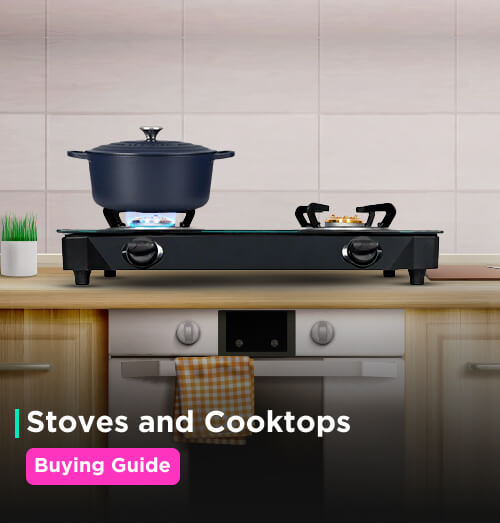Stoves, Hobs or Cooktops: Which one is right for you?
While Stoves are the most preferred choice in Indian households, Hobs and Cooktops are also gaining popularity. Each of these cooking appliances offer the best user experience and choosing the right one completely depends on your usage. So, before you make a choice, it is always better to understand your requirements. Let's find out which one of these three is best for you.
- Provide sufficient direct heat to cook food
- Can reheat, slow cook, grill, boil, sear and saute your food
- Freestanding body type can be moved easily
- Ideal for spacious kitchen platforms
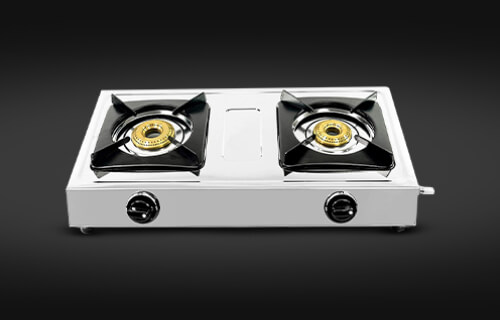
- Provide instant heat, which can be controlled through knobs
- Can cook most types of recipes by adjusting heat levels
- Built-in designs are stationary
- Ideal for a permanent designated space on your kitchen platform
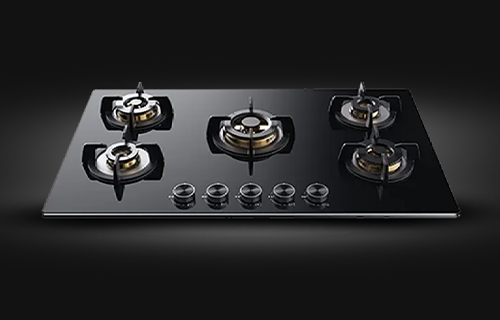
- Heat your food by transmitting energy without flames
- Can reheat, slow cook, boil, sear or sauté your food
- Freestanding body type can be moved easily
- Compact structure occupies less space on your kitchen platform
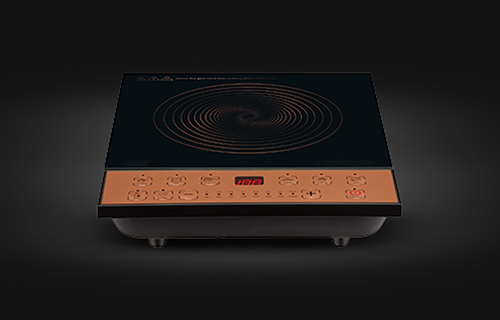
Choose your perfect type
Stoves
Stoves are the most popular cooking equipment found in almost all Indian households. They are designed to cook food by burning gas or using electricity. They offer sufficient heat and work with knobs. You can select a Gas Stove or an Electric Stove as per your usage requirements.
In Indian kitchens, cooking food on a Gas Stove is considered to be the traditional method. Gas Stoves work on the supply of natural gas, propane, butane, liquefied petroleum gas or other flammable gas. You can place them in your kitchen right next to your gas supply pipe. Providing direct heat to the cookware, Gas Stoves cook your food evenly with an open flame. They also give you the benefit of controlling the flames and often come with low and high-flame burners. Right from preparing rice and chapatis to even pastas and soups, you can cook a variety of cuisines with Gas Stoves. Key benefits include:
- More energy and cost-effective
- Burners instantly warm up and cool down
- Can be used even during power outages
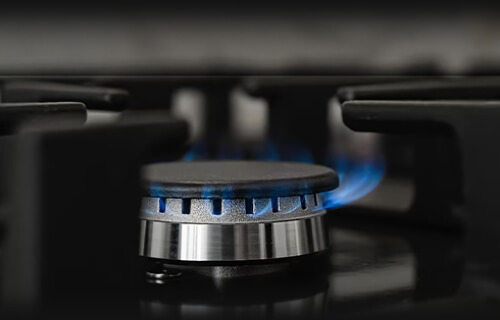
Electric Stoves are also called Flameless Cooking Stoves as they work on electricity. They create energy with electricity to cook food, so you need to ensure there's a steady supply of electricity in your home. There are many portable Electric Stoves with minimal cooking space requirements, allowing food to be cooked food on a single coil top. Spiral coils or solid disks warm up with the help of electricity and then provide heat to cook food. Key benefits include:
- Use less electricity and are energy-efficient
- Conserves heat as there's no open flame
- Convenient, easy to clean, and safe to use
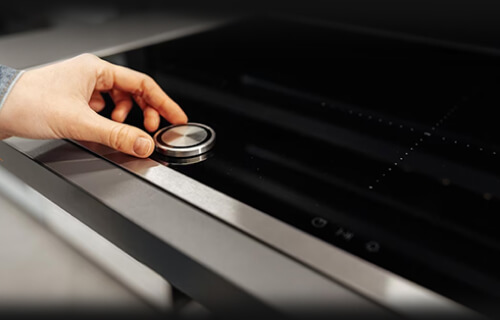
Hobs
Hobs offer an aesthetic appeal to modern kitchens today. Their in-built design perfectly integrates them into your kitchen countertop. Their stationary structure allows heavy cooking utensils to be loaded and unloaded with ease. Hobs are easy to clean and come with tons of features.
Gas Hobs work on a straightforward mechanism to ignite the flame. The gas flows through the supply pipe to initiate the spark, which eventually heats up the cookware and cooks food. Controlling the flames becomes easier with the help of knobs. You get better heat control with multiple-flame burners and they also come with safety devices to prevent gas leakage. Key benefits include:
- Instant control of the flame with the knobs
- Suitable for any type of cookware including cast iron
- Designed with Flame Failure Safety Device for high-level safety
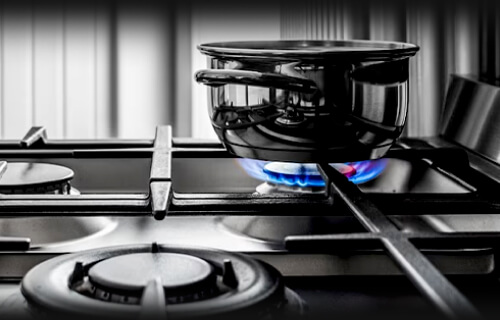
Induction Hobs work on electricity but give faster and more efficient cooking results. They use electromagnetism that only heats up the utensil and not the hob ring. Hobs have the fastest cooking process and they offer precise temperatures while cooking. Key benefits include:
- Consumes less energy
- Has zero carbon monoxide emissions
- Smooth surface ensures easy cleaning
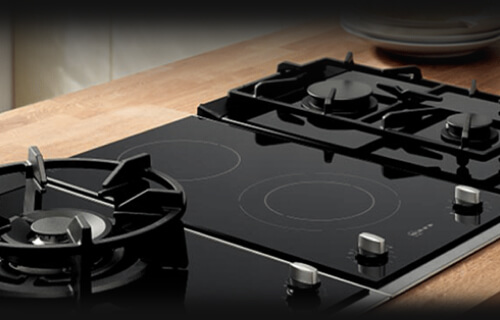
Cooktops
Cooktops have a freestanding body and both work on electricity. Though electricity is their main source of heat, they have different heating mechanisms. They are designed with hot plates and deliver high efficiency, while cooking food. Cooktops can be controlled through knobs or buttons and are quite easy to use.
Induction Cooktops have come a long way from a single heat plate to multiple plates and knobs. They use electromagnets and copper coils to create heat. The coils produce magnetic currents, which heat up only the cookware, leaving the remaining surface area cool. They need a small amount of energy to operate and come with touch buttons or knobs to regulate the temperature. Key benefits include:
- Faster, more efficient and evenly cooks food
- Surface of the Cooktop does not heat and is safe to touch
- Easy to clean
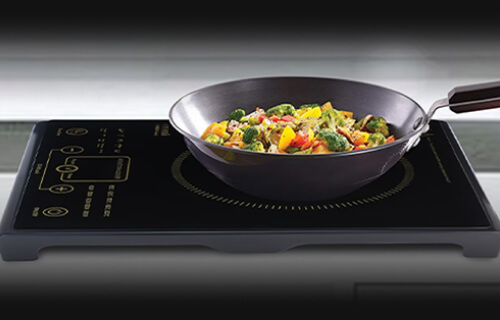
Electric Cooktops have metal coils underneath the surface, using centralised heat to cook food. The design is simple and reliable, along with great functionality. These Cooktops have residual heat that helps in keeping food warm even when you switch off the Cooktop. Key benefits include:
- Easy to install, use and maintain
- Offers controlled and managed heat that reduces energy cost
- Work well with any cookware
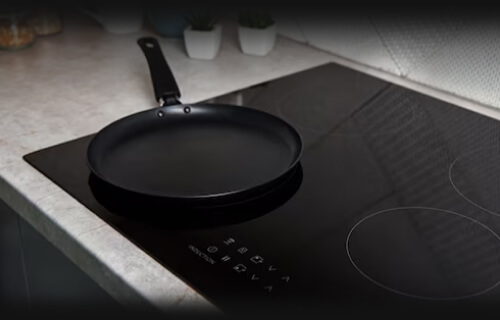
How many burners should you opt for?
When it comes to choosing the right Stove, Hob or Cooktop for your kitchen, the important factor to consider is how many burners should you go for. The number of burners totally depends on your cooking needs, style and family size.
Ideal for a single person
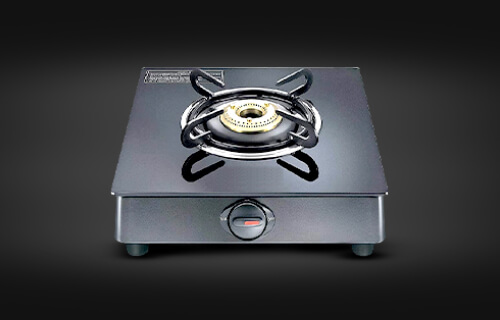
Ideal for a nuclear family of 2-3 members
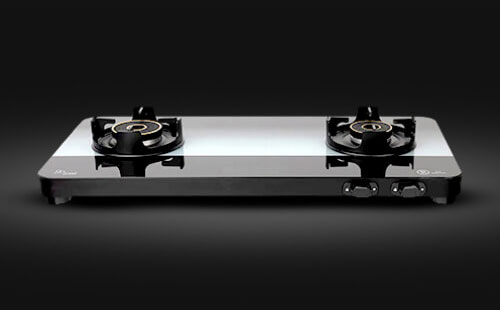
Ideal for a small to medium-sized family, with 3-5 members
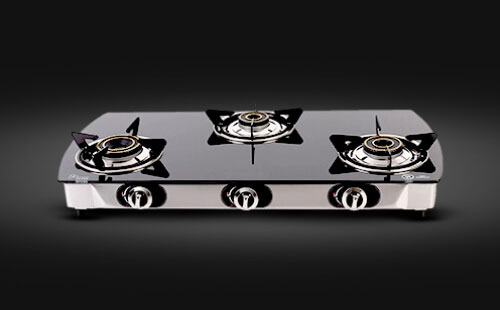
Ideal for medium to large-sized family, with 5-6 members
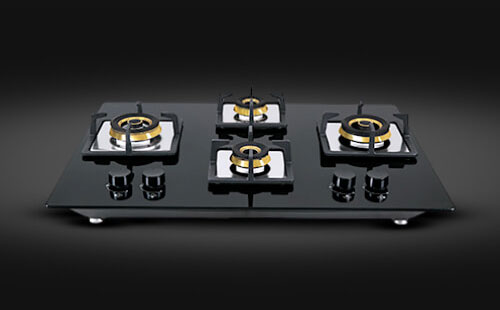
Ideal for a joint family, with 6 or more family members
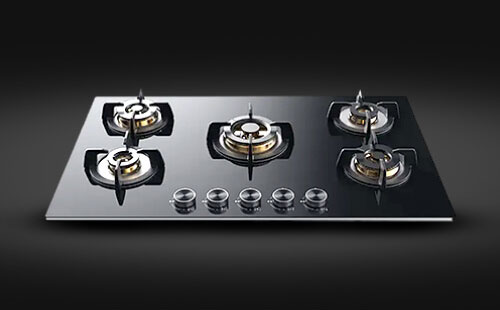
Which ignition type should you consider to light a Gas Stove or Hob?
A Gas Stove or Hob needs a kick-start to ignite the flames. And that is why there are two ways to light up your cooking appliance. You can either choose a manual ignition model or an automatic one.
Manual Ignition
Manual ignition requires you to turn a knob to start the gas flow. Once the flow of gas starts, then you can ignite the burner with the help of a lighter or matchstick.
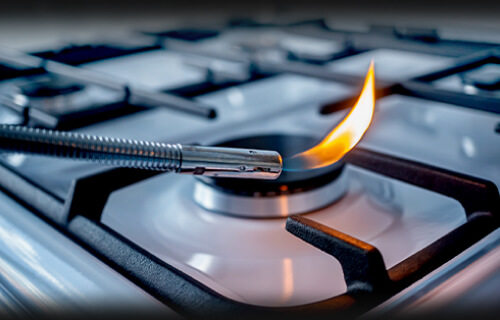
Automatic Ignition
Automatic ignition lights up the burner automatically with the help of electricity. You just need to turn the knob, which triggers an electric spark to ignite the gas burner.
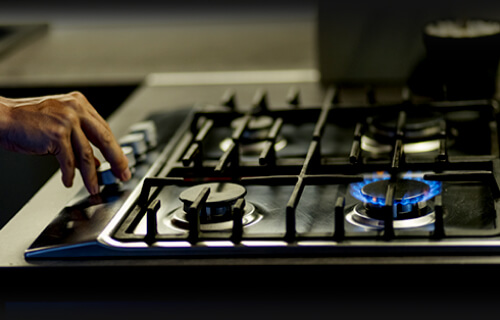
What features should you look for in a Stove, Hob or Cooktop?
Size
The size you choose depends on factors like the layout of your countertop, its dimensions and how much space you prefer. Standard cooktop sizes range from 15 to 36 inches, considering the average Indian kitchen.
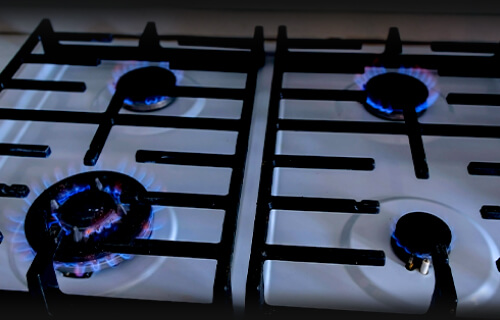
Body Material
You can either go for a Stainless Steel model or a Glass Top one. Stainless steel ensures durability and scratch resistance. A glass top model adds an aesthetic appeal and is easy to clean.
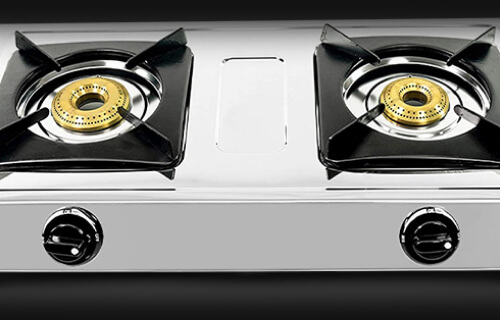
Burner Type
Choosing the right burner type is crucial as it is where the actual flame ignites and from which heat emanates. You will find different burner materials like pressure die-cast alloy burners, brass burners and forged brass burners.
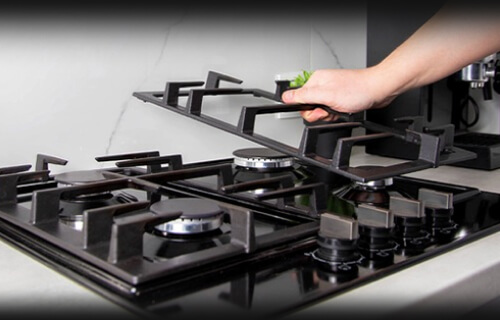
Cooking Habits
You can analyse and understand your cooking habits before buying a Stove, Hob or Cooktop. How much food do you cook? Do you cook for a long time? How often do you try out new recipes? These are some of the questions you need to ask yourself.
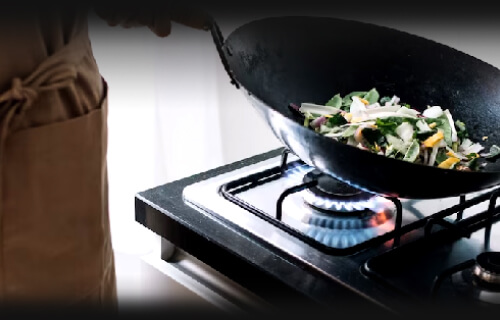
Certification
Make sure you check if your chosen model has an ISI mark on it, which guarantees safety checks and zero accidents.

